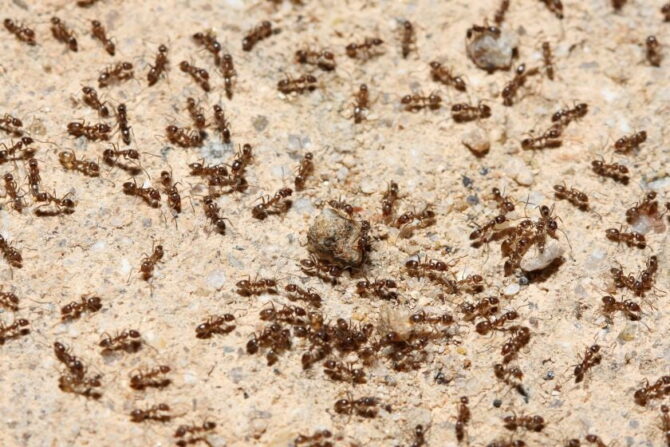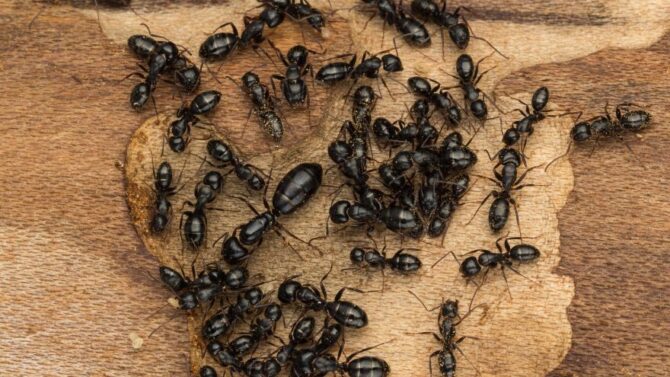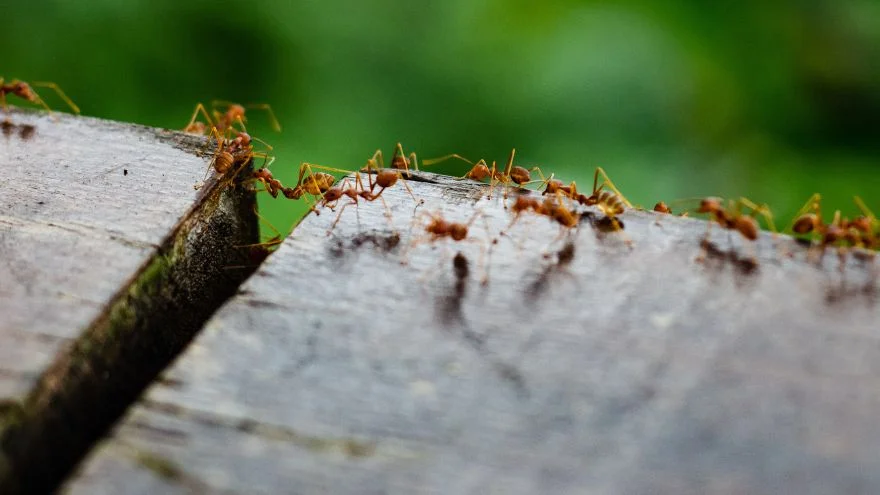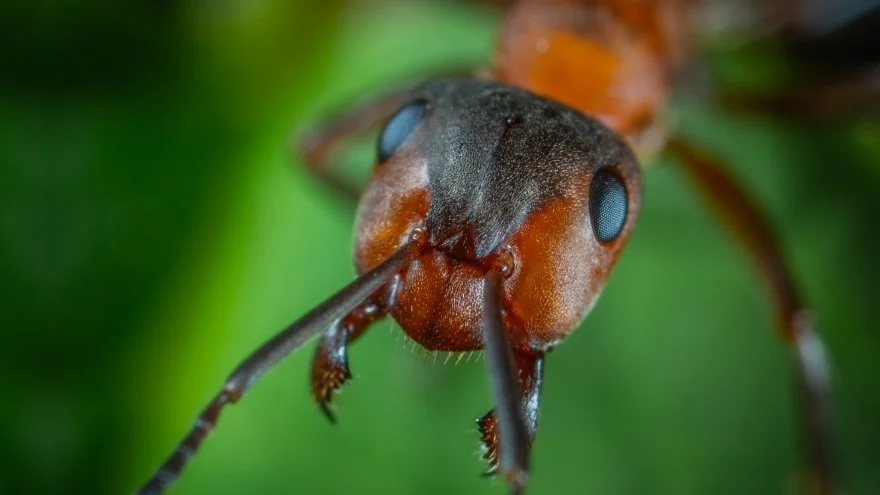Ants are interesting little creatures due to their fascinating lifestyle, and you can’t miss noticing them because they are everywhere.
Asides from their superhuman strength, there is also a testament to the fact that ants are social creatures that mostly like staying in groups.
Sometimes you see them marching in a single file, other times they may be attending to a task. Their widespread nature is enough to wonder how many ants are there in the world.
The ant population in the world is over ten thousand trillion, which is way more than the biomass of humans and shockingly more than the individual stars in our galaxy. And this incredible population of over 12,000 species of ants is spread across the globe.
Read on to find out more about the total population of ants and other facts.
Ants: An Overview

Ants are tiny insects and social creatures that dwell in colonies ranging from a dozen to a million.
Ants are resilient creatures with tremendous survival skills, which is why they can be found in almost every habitat, whether desert or rainforest.
It is no wonder why these resilient insects are said to have been around for at least 50 million years. 1
Evidence shows that there are surprisingly well over 12,000 species of ants today.
And they come in various sizes and colors; some are big, some are small, while some are red and some are black. In some cases, some even have wings, and some do not.
Ants are divided into two types: social ants and lone or solitary ants.
Social Ants
Social ants are communal ants that prefer to live in a colony. They cooperate to protect themselves from danger, such as predators.
Solitary or Lone Ants
On the other hand, solitary or lone ants do not see the need to live together as they prefer to wander alone and fend for themselves.
While traveling, you will often find some of them in your homes, under the couch, in clothes, luggage, or suitcase. They hardly stay in groups like the social ants.
How Many Ants are there in the World?

The estimated population of ants on our planet is around 10 quintillion, which is said to be even more than the total number of stars in our galaxy. 2
Ants are so many that they constitute around 10-20% of the population of the animal kingdom. 3
Most ant species dwell in anthills while the rest, around 200 species, roam on lands where they prefer to live the nomad life.
With over 12,000 species of ants and an estimated population of around 10 quintillions, you can now understand why they are almost everywhere.
The only place on the continent you won’t find ants is Antarctica due to its extreme weather.
Asides from Antarctica, thousands of ant species are scattered across the globe, with Australia holding the highest amount, with about 4,000 species inhabiting the continent.
How Many Ants Live in an Anthill?

That mound of dirt you often see is called an anthill. On the surface, the anthill may not seem much, but that’s only the tip of the iceberg.
Because beneath that anthill surface lies an intricate chain of networking tunnels and chambers that goes downwards and can reach up to 6 feet below.
Often you can see a dozen ants roaming around the anthill on a good day. Or, when the anthill is being disturbed, you can see them in their hundreds scurrying for their lives, and you might have assumed that’s the entire estimated number.
But that’s far from the truth. Guess what? There is an average of at least 250,000 ants in every anthill!
Behavior of Ants

Ants are naturally social insects that live together in a colony. How big the colony is dependent on the number of ants there are, but sometimes the population inside this colony can range from a few dozen up to a million ants.
Inside, the ant colony comprises the drone, queen, workers, and soldiers, all working together as a community for the common good.
The queen’s only job is to lay the egg. Queen ants can lay up to a million eggs during their lifetime. She is regarded as the most important, and the other ants must keep her safe—the drone mates with the queen.
The workers take care of the young while ensuring food in the storehouse. Like their name, the soldiers must protect the colony from external threats.
The queen and male have wings but shed them off during mating.
Dive Deeper: Why Is There No King Ant?
Some Unique Facts About Ants
- Do you know that ants don’t have ears? Vibrations through special sensors on their knees and feet are what they use to move about. In addition, they also have special hairs and antennae with strong sensors, which they use to feel and observe their surroundings. Also, when traveling, ants leave behind a trail of pheromones that other ants from the colony can use to locate and find their way. 4
- It’s no secret that ants do have super strength. They may look small, but these tiny creatures can lift something 20 times their body size. It is like a 150-pound man lifting a hippopotamus or a 150-pound man lifting a Nissan truck! Remember that the average man can only lift 170 pounds, which shows that the average ant is much stronger than the average human. Their incredible strength is why you often see them carrying large crumbs of food and other stuff with their mandibles almost effortlessly and dragging them to their homes.
- Although most ants build anthills, not all of them do. Only about 200 species of ants out of the entire 12,000 species build and live in anthills, and they are called army ants. This species of ants are vicious and spend most of their time traveling with their colonies, attacking anything that crosses their path, including the invasion of the anthills of other species.
- Army ants are always on the move, except at night when they make a temporary nest or camp before they set off again in the morning. Another time they rest is during the breeding period when they set up a stationary nest using their bodies to cover and protect the queen while she lays her eggs. As soon as the eggs hatch, they are on the move again.
- Ants are omnivorous creatures that feed on various edibles such as leaves, seeds, plants, nectar, and small insects. They will also carry leftovers home, some of these leftover crumbs can weigh up to 20 times their body size, but that’s no issue for the average ant. That’s one of their unique strength!
Conclusion: What is the Ant Population?
In summary, this article was written to provide insights into the population of ants species and their unique and amazing lifestyle.
An estimated figure of over 12,000 species has made ants the most populous insects on the planet.
They may not be the most populous creature because bacterias hold that title, but when competing with insects and mammals, they are a force to be reckoned with.
Ants are also vital to the ecosystem, as they help pollinate and displace plant seeds. Their burrowing activities also help aerate and loosen the soil.
Next Up…
- How Do Ants Reproduce? Everything you need to know about their mating process, reproduction, and life cycle.
- How Are Queen Ants Born? Queens occupy an important position in the caste system. Discover how they’re born and how they become queens.
- Can Ants Swim In Water? Also See: Do They Drown In Water? They may be bad swimmers who need oxygen to survive. Discover the different species of swimming ants.
References & Notes
- Steve B., 2006. Ants are surprisingly ancient, arising 140-168 million years ago. [online] The Harvard Gazette.
- Liz L., 2016. This Is Why Insects Rule the World. [online] National Geographic.
- Ted S., 2020. In search of ant ancestors. [online] PNAS.
- Debra R., 2018. What are pheromones and do humans have them? [online] Medical News Today.





